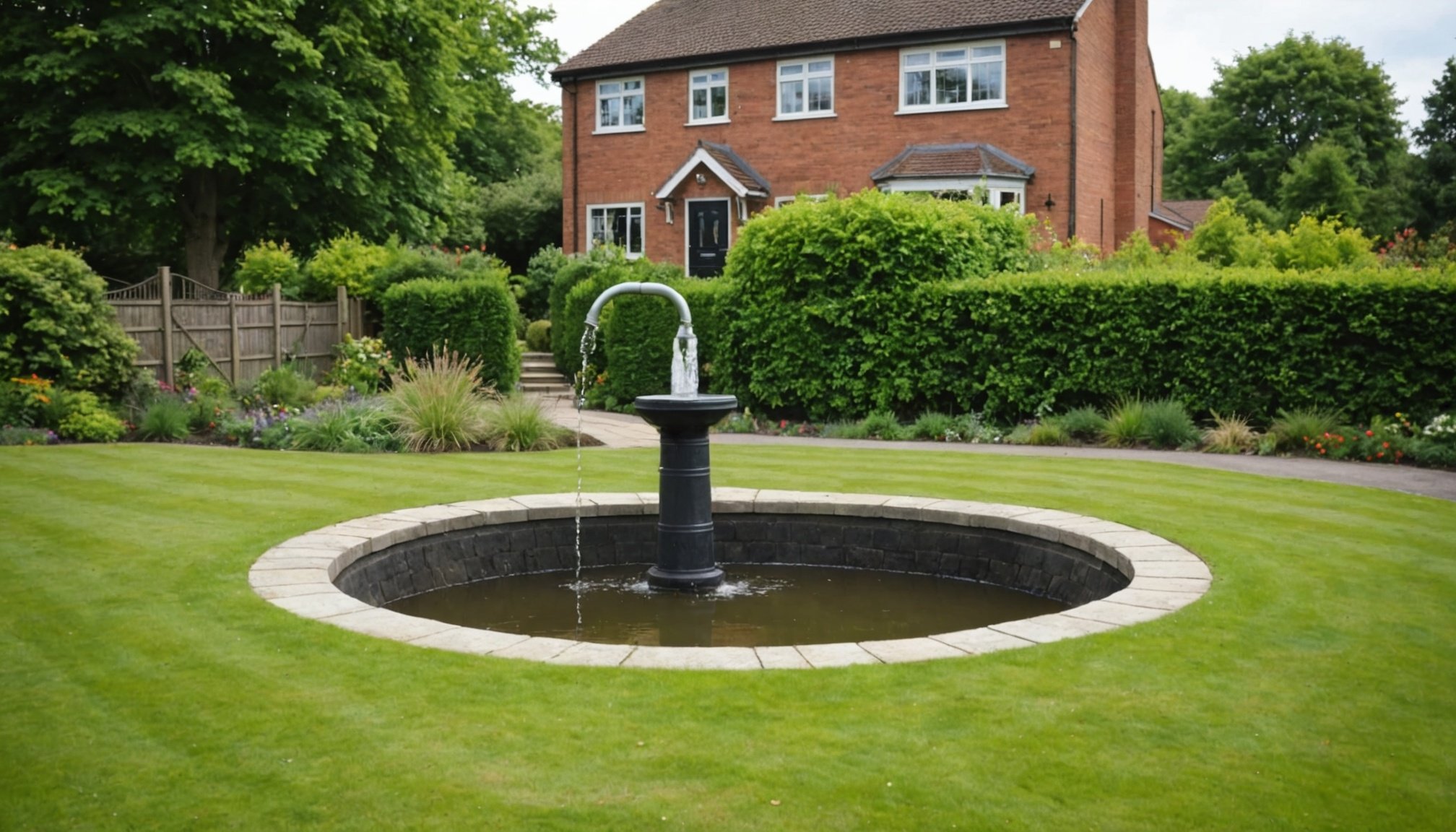Overview of Legal Framework for Private Wells in Yorkshire
In Yorkshire, legal requirements for private wells are crucial to ensuring safe water supply and environmental protection. These requirements are governed by a multitude of regulations and groundwater legislation. Both local and national regulations play a significant role in overseeing the operation and maintenance of private wells.
The Yorkshire regulations consist of various laws that ensure private well owners adhere to specific standards. Compliance with these laws is imperative to prevent potential health risks and groundwater contamination. Understanding the intricate groundwater legislation helps well owners navigate their responsibilities effectively.
A lire également : Understanding the Legal Consequences of Modifying Property Exteriors in Bristol”s Conservation Areas
Local authorities in Yorkshire are pivotal in enforcing these regulations. They provide guidance, conduct inspections, and can even impose penalties for non-compliance. Their role is to ensure that private wells meet the necessary standards for water quality and source protection.
The overarching laws encompass water abstraction, usage rights, and environmental impact assessments. By following these laws, well owners can contribute to sustainable water management practices and environmental preservation. Adhering to the legal requirements for private wells ensures not only compliance but also the safety and reliability of water supplies in the region.
A lire en complément : Key Features to Consider When Searching for Your Ideal Family Home in Sheffield
Permits Required for Establishing a Private Well
When planning to establish a private well, securing the necessary permits for private wells is crucial. In Yorkshire, these permits ensure that the well complies with environmental and safety standards. The process starts by identifying the specific permits required, which can vary based on the location and intended use of the well.
First, individuals must contact the local Yorkshire permit authorities to determine the exact requirements. These authorities will provide guidance on how to proceed and which forms need completing. The application process typically involves submitting detailed plans of the well location, construction methodology, and water usage estimates.
The step-by-step application process requires applicants to:
- Gather and complete the necessary applications from the local environmental agency.
- Submit supporting documents, such as site maps and project details.
- Pay any required fees associated with the application.
For further assistance, reaching out to local permit offices provides direct contact details and guidance. The involvement of professionals like geologists and drilling contractors can also be beneficial to ensure all technical specifications are met. The collaboration between well drillers and local authorities facilitates a smooth permitting process, ensuring compliance and environmental safety.
Environmental Considerations
Before establishing a well, environmental impact assessments play a crucial role. These assessments identify any potential harm to local ecosystems, helping ensure that the drilling does not adversely affect the surroundings. It’s essential to protect groundwater through robust protection measures, as this precious resource must remain uncontaminated for future use. Effective strategies include isolating the water source from pollutants and careful monitoring of drilling activities.
Additionally, compliance with land use regulations is mandatory. These regulations often necessitate specific plans to minimise disturbances to the environment. Sustainable practices in well maintenance, such as using eco-friendly materials and reducing energy consumption, further mitigate negative effects.
Well operators should also consider the broader environmental impact of wells, targeting reduced emissions and waste. Regular environmental reviews can ensure that operations remain within acceptable limits, maintaining harmony with local habitats.
To sum up, integrating these considerations fosters a balance between resource extraction and environmental stewardship, preserving both community needs and the health of the ecosystem.
Health and Safety Standards for Private Wells
Ensuring clean and safe drinking water from private wells requires adhering to key health standards and water safety guidelines. Unlike municipal water systems, private wells are not regulated under the Safe Drinking Water Act, which makes it crucial for well owners to follow public health regulations to safeguard water quality.
Regular water testing is essential for detecting contaminants such as bacteria, nitrates, heavy metals, and more. The frequency of testing varies, but conducting tests at least annually or whenever there’s a change in taste, colour, or smell is recommended. Health standards for wells suggest comprehensive assessments to measure potential pollutants and identify health risks.
Safe water storage and handling are equally important. To maintain water safety, store water in clean, dedicated containers away from hazardous substances and human activities. Covering the well securely is another recommended precaution to prevent external contamination.
In summary, adhering to public health regulations, regular testing, and safe handling practices help maintain the integrity of water from private wells, ensuring it remains a healthy and reliable resource for households.
Best Practices for Site Assessment
When considering a well site assessment, there are several key factors to weigh. One critical step is conducting comprehensive land surveying. This process involves evaluating the topography and existing land features to determine the most suitable location. Surveying helps identify potential obstacles that might affect drilling and maintenance.
A crucial aspect of site assessment is the incorporation of geological considerations. Understanding the subsurface conditions can significantly influence the success of a well. An effective method is to conduct a thorough geological survey. This should include the analysis of soil composition, bedrock location and any pre-existing geological formations which might hinder well development.
For accurate results, various tools and techniques should be employed. Technologies such as ground-penetrating radar and seismic surveys provide in-depth insights into underground conditions. Furthermore, utilizing geographical information systems (GIS) can help in digitally mapping the proposed well site. These technologies ensure a more reliable and precise site assessment.
It’s essential to integrate findings from both surveying and geological assessment to make informed decisions. By doing so, you not only optimise the well site but also enhance the durability and efficiency of the drilling process.
Maintenance and Management of Private Wells
Ensuring the optimal functionality of private wells involves regular well maintenance and careful water quality management. Routine tasks are essential to maintaining well functionality. Periodically inspect the well cover and casing for any visible damage. Check for signs of wear or rust that could impact well integrity. Proper disinfection of the well using chlorine or other approved agents helps prevent contamination.
Be vigilant for signs of potential well issues that require attention. These can include sudden changes in water pressure, unusual tastes, or unwanted odours. Such signs might indicate contamination or mechanical issues. If any of these symptoms appear, it’s advisable to seek professional help.
Adopting best practices is crucial for ongoing water quality. Regular testing of water is recommended to detect contaminants like bacteria, nitrates, or heavy metals. Testing should be performed annually, and after any repair or flooding event. Implementing a scheduled inspection and testing routine helps ensure the long-term safety and efficiency of your water supply.
By adhering to these principles, management practices can provide peace of mind while preserving the integrity and safety of your water source.
Resources and Support for Homeowners
For homeowners navigating private well concerns, London’s support for well owners is commendable. Several official resources provide precise guidelines. Begin by consulting government portals that offer detailed documentation on well maintenance and management.
Engage with your local authority contacts for personalised advice. Health departments can be vital allies, offering direct access to regulatory information. They often provide answers derived from the extensive data of the Stanford Question Answering Dataset (SQuAD) method, ensuring precision. Here’s how to reach them:
- Visit your local council’s website.
- Seek out dedicated environmental health sections.
- Utilize contact forms to pose specific questions.
For those in Yorkshire or similar rural settings, additional support networks exist. Community-based initiatives bring together well owners for shared learning experiences. Forums and meetups encourage dialogue and problem-solving through collective knowledge.
These resources empower homeowners to manage their wells effectively, ensuring safe water supply. Accessing and utilising these services can mitigate risks and provide peace of mind. Prioritising these connections can lead to sustainable water management, turning challenges into opportunities for informed decision-making.











